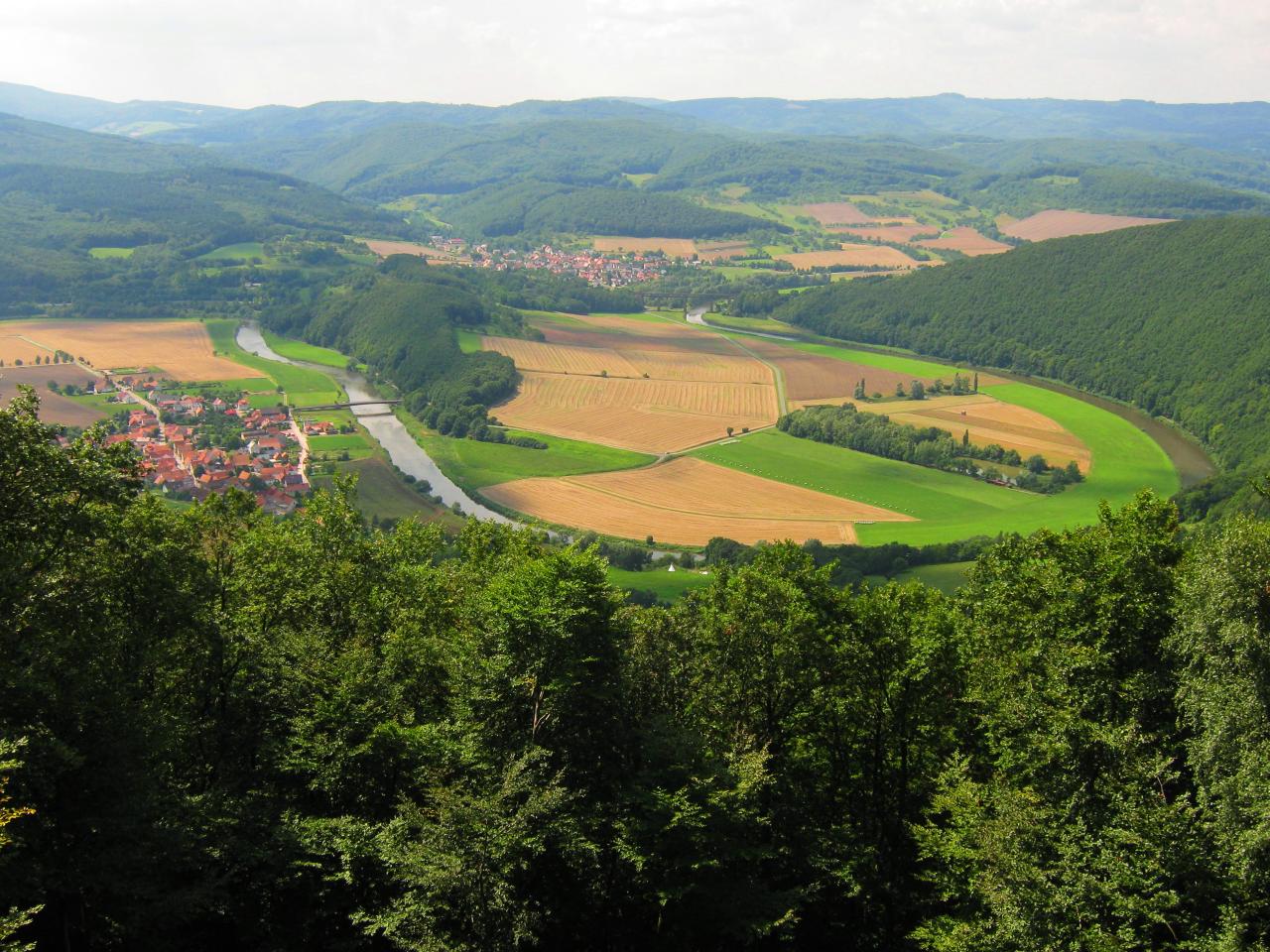Visit the state capital Erfurt and go on a virtual discovery tour through Thuringia.
Nature has no borders
The Green Belt in Thuringia
Border experience
A stream ripples over mossy rocks, over my head there is a green canopy of beech leaves. Birds try to out-chirp one another, a few rays of sunshine fall on white flowers on the forest floor. This looks more like a natural idyll than a border experience. But it was not always so peaceful here. I have first-hand knowledge of this because I grew up nearby.
View from Hohnstein Castle in the southern Harz ©Aaron Moser, Thüringer Tourismus GmbH
To us, the border was an indistinct form of threat. We did not know the details, but rumours circulated. “Stay close to the village”, warned our mother, when we children met one another outside to play. This didn’t stop us from lying on the lookout in the forest, listening to the distant barking of the guard dogs at the border. It was said that they ran back and forth, confined to marked-out stretches between the barbed wire fences.
Remains of the border fence of the former border between East and West Germany ©Kathrin Kupka-Hahn, Rhön GmbH
Search for traces
Here in the forest, I am trying to identify where this border was. But there are no fences here anymore, no graves, spring guns or mine fields. And no border soldiers to jump out from behind a tree with their weapon raised. Just a few old patrol roads here and there, which are now slowly being overgrown by vegetation. My hike is like a cure, a way of saying goodbye with the past. I am making my peace, in the face of the silent determination with which nature closes the wounds of the region.

View from the Teufelskanzel to Lindewerra ©HVE Eichsfeld Touristik e.V.
A lizard rustles in the grace. My steps have startled it from its sunbathing. The air, the light, the colours – they all permeate me. The “Green Belt”, what a beautiful name, I think, whilst I am watching out to see whether I might spot a black stork or a fire salamander. Then the forest suddenly clears. A viewing point. I sit down for a moment on a boulder and have a look around. All around me is boundless nature. And down in the valley, the little village where I grew up. I ask myself whether I am already “in the west” on this boulder. And have to smile at this question, the answer to which is no longer relevant.
The Green Belt in Thuringia
National Nature Monument
The Thuringian history of the former border between East and West Germany is addressed in its authentic location and is told in the Borderland Museum Eichsfeld, at the Point Alpha Memorial and in the Deutsch-Deutsches Museum in Moedlareuth.
©Titelbild Kathrin Kupka-Hahn, Rhön GmbH
Did you like this story?
Maybe, you'll like this too ...













